Reading data in SSIS
In this section we will learn how to configure and use FastSpring Connector in API Source to extract data from FastSpring.
Video tutorial
This video covers following and more so watch carefully. After watching this video follow the steps described in this article.
- How to download SSIS PowerPack for FastSpring integration in SSIS
- How to configure connection for FastSpring
- How to read data from FastSpring
- Features about SSIS API Source
- Using FastSpring Connector in SSIS
Step-by-step instructions
-
Begin with opening Visual Studio and Create a New Project.
-
Select Integration Service Project and in new project window set the appropriate name and location for project. And click OK.
In the new SSIS project screen you will find the following:
- SSIS ToolBox on left side bar
- Solution Explorer and Property Window on right bar
- Control flow, data flow, event Handlers, Package Explorer in tab windows
- Connection Manager Window in the bottom
 Note: If you don't see ZappySys SSIS PowerPack Task or Components in SSIS Toolbox, please refer to this help link.
Note: If you don't see ZappySys SSIS PowerPack Task or Components in SSIS Toolbox, please refer to this help link. -
Now, Drag and Drop SSIS Data Flow Task from SSIS Toolbox. Double click on the Data Flow Task to see Data Flow designer.

-
From the SSIS toolbox drag and API Source (Predefined Templates) on the data flow designer surface, and double click on it to edit it:
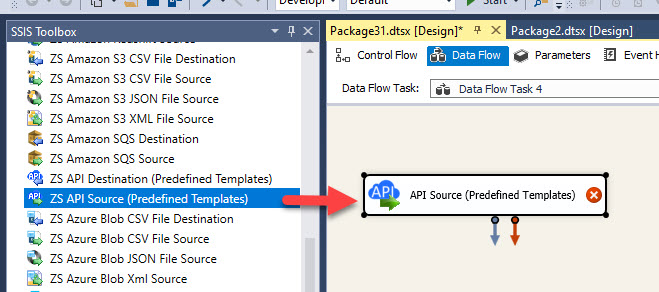
-
Select New Connection to create a new connection:
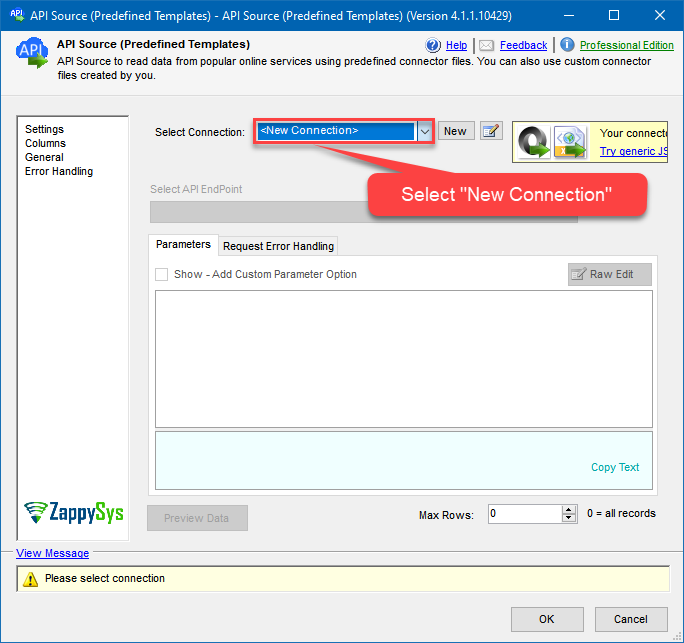
-
Use a preinstalled FastSpring Connector from Popular Connector List or press Search Online radio button to download FastSpring Connector. Once downloaded simply use it in the configuration:
FastSpring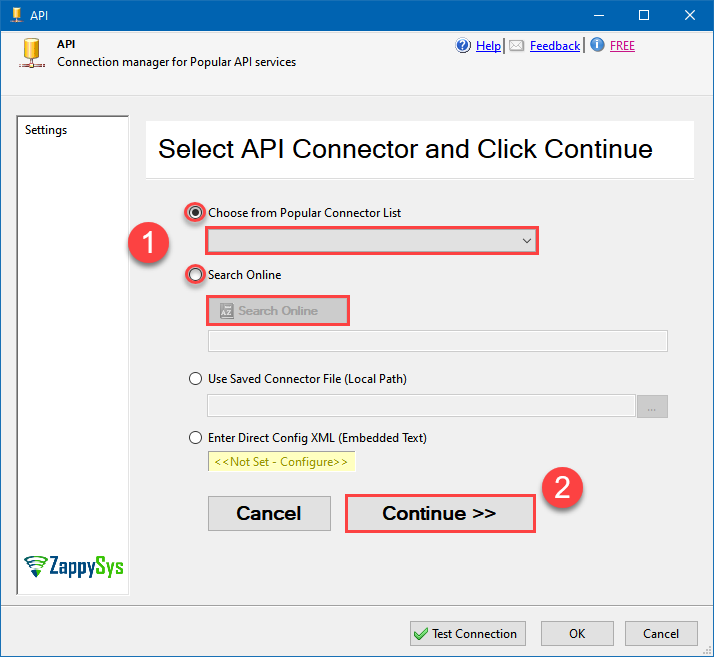
-
Now it's time to configure authentication. Firstly, configure authentication settings in FastSpring service and then proceed by configuring API Connection Manager. Start by expanding an authentication type:
FastSpring authentication
Here is how to obtain FastSpring API credentials:
- In the FastSpring portal, navigate to Developer Tools > APIs > API Credentials.
-
Click Create, FastSpring will automatically generate your Username and Password.
Copy them, we will need them in the next step:
 WARNING: Securely store the credentials for future reference.
WARNING: Securely store the credentials for future reference. -
Now go to SSIS package or ODBC data source and use this token in API Credentials authentication configuration:
- In the UserName field paste the Username value you copied in the previous step.
- In the Password field paste the Password value you copied in the previous step.
- Click Test Connection to confirm the connection is working.
- Done! Now you are ready to use FastSpring Connector!
API Connection Manager configuration
Just perform these simple steps to finish authentication configuration:
-
Set Authentication Type to
API Credentials [Http] - Optional step. Modify API Base URL if needed (in most cases default will work).
- Fill in all the required parameters and set optional parameters if needed.
- Finally, hit OK button:
FastSpringAPI Credentials [Http]https://api.fastspring.comRequired Parameters UserName Fill-in the parameter... Password Fill-in the parameter... Optional Parameters RetryMode RetryWhenStatusCodeMatch RetryStatusCodeList 429 RetryCountMax 5 RetryMultiplyWaitTime True Your Webstore URL (Only used by get_products_visibility endpoint) https://YOUR-STORE.onfastspring.com 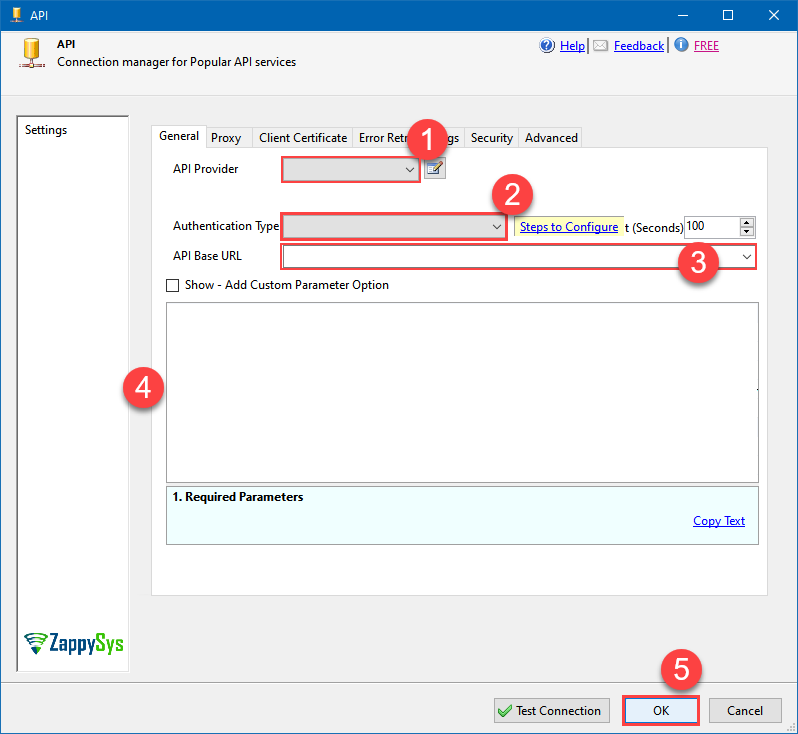
-
Select the desired endpoint, change/pass the properties values, and click on Preview Data button to make the API call.
API Source - FastSpringRead / write FastSpring data related to Orders, Subscriptions, Quotes, Products, Accounts and more without coding.
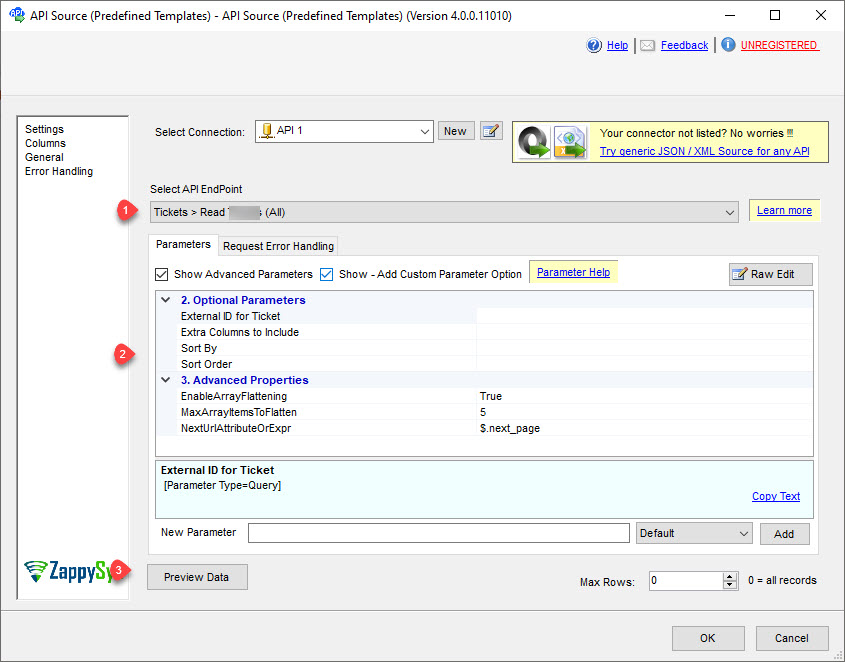
-
That's it! We are done! Just in a few clicks we configured the call to FastSpring using FastSpring Connector.
You can load the source data into your desired destination using the Upsert Destination , which supports SQL Server, PostgreSQL, and Amazon Redshift. We also offer other destinations such as CSV , Excel , Azure Table , Salesforce , and more . You can check out our SSIS PowerPack Tasks and components for more options. (*loaded in Trash Destination)
